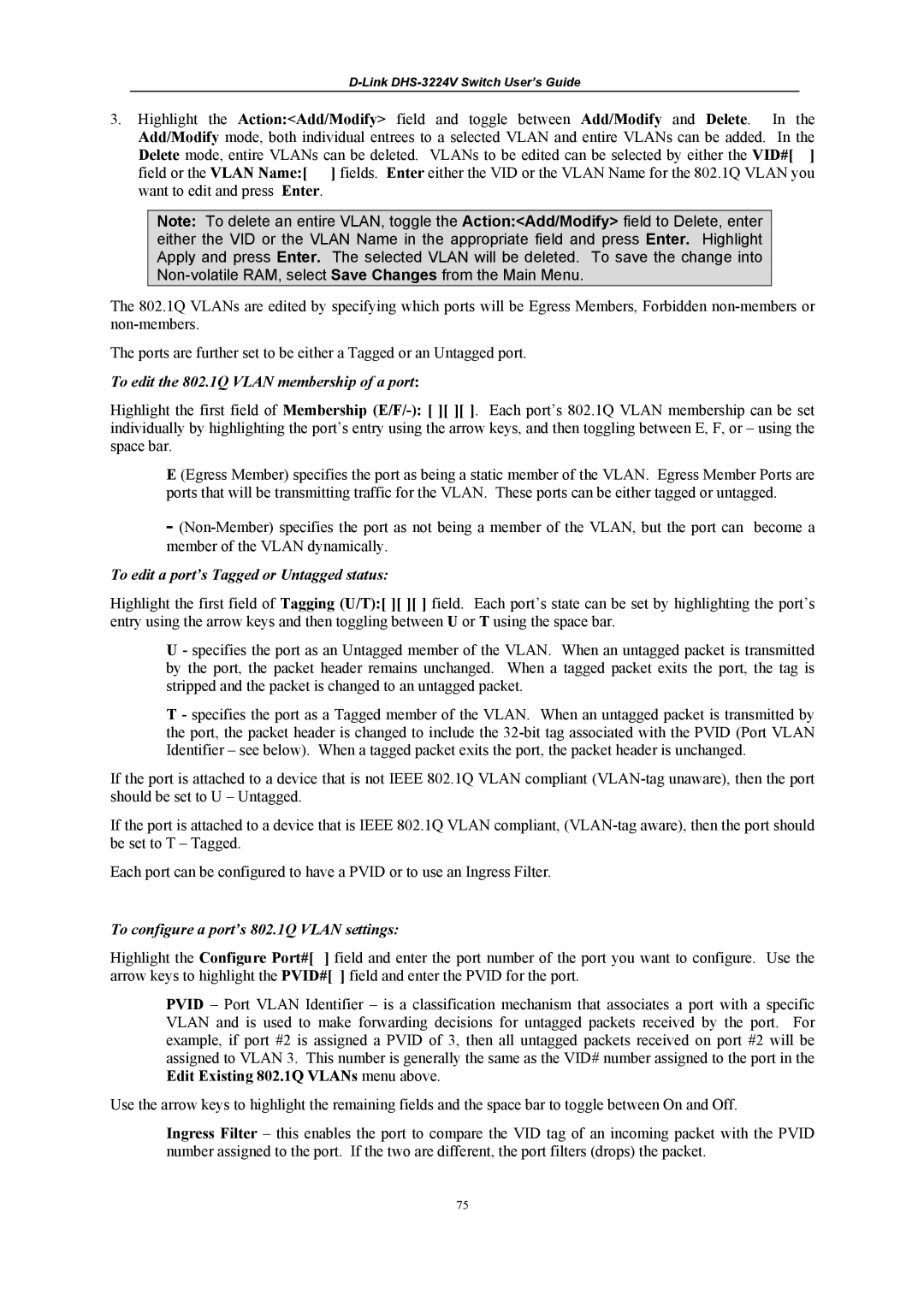
D-Link DHS-3224V Switch User’s Guide
3.Highlight the Action:<Add/Modify> field and toggle between Add/Modify and Delete. In the Add/Modify mode, both individual entrees to a selected VLAN and entire VLANs can be added. In the
Delete mode, entire VLANs can be deleted. VLANs to be edited can be selected by either the VID#[ ] field or the VLAN Name:[ ] fields. Enter either the VID or the VLAN Name for the 802.1Q VLAN you want to edit and press Enter.
Note: To delete an entire VLAN, toggle the Action:<Add/Modify> field to Delete, enter either the VID or the VLAN Name in the appropriate field and press Enter. Highlight Apply and press Enter. The selected VLAN will be deleted. To save the change into
The 802.1Q VLANs are edited by specifying which ports will be Egress Members, Forbidden
The ports are further set to be either a Tagged or an Untagged port.
To edit the 802.1Q VLAN membership of a port:
Highlight the first field of Membership
E (Egress Member) specifies the port as being a static member of the VLAN. Egress Member Ports are ports that will be transmitting traffic for the VLAN. These ports can be either tagged or untagged.
-
To edit a port’s Tagged or Untagged status:
Highlight the first field of Tagging (U/T):[ ][ ][ ] field. Each port’s state can be set by highlighting the port’s entry using the arrow keys and then toggling between U or T using the space bar.
U - specifies the port as an Untagged member of the VLAN. When an untagged packet is transmitted by the port, the packet header remains unchanged. When a tagged packet exits the port, the tag is stripped and the packet is changed to an untagged packet.
T - specifies the port as a Tagged member of the VLAN. When an untagged packet is transmitted by the port, the packet header is changed to include the
If the port is attached to a device that is not IEEE 802.1Q VLAN compliant
If the port is attached to a device that is IEEE 802.1Q VLAN compliant,
Each port can be configured to have a PVID or to use an Ingress Filter.
To configure a port’s 802.1Q VLAN settings:
Highlight the Configure Port#[ ] field and enter the port number of the port you want to configure. Use the arrow keys to highlight the PVID#[ ] field and enter the PVID for the port.
PVID – Port VLAN Identifier – is a classification mechanism that associates a port with a specific VLAN and is used to make forwarding decisions for untagged packets received by the port. For example, if port #2 is assigned a PVID of 3, then all untagged packets received on port #2 will be assigned to VLAN 3. This number is generally the same as the VID# number assigned to the port in the Edit Existing 802.1Q VLANs menu above.
Use the arrow keys to highlight the remaining fields and the space bar to toggle between On and Off.
Ingress Filter – this enables the port to compare the VID tag of an incoming packet with the PVID number assigned to the port. If the two are different, the port filters (drops) the packet.
75
